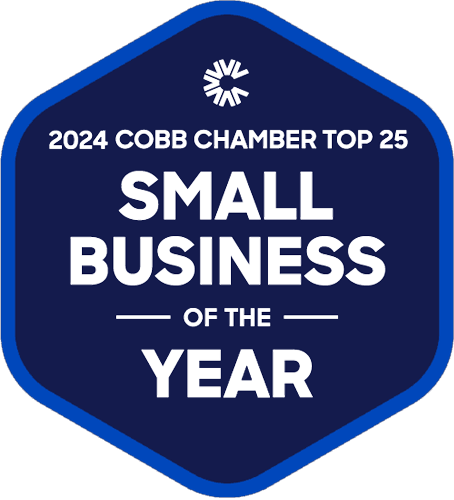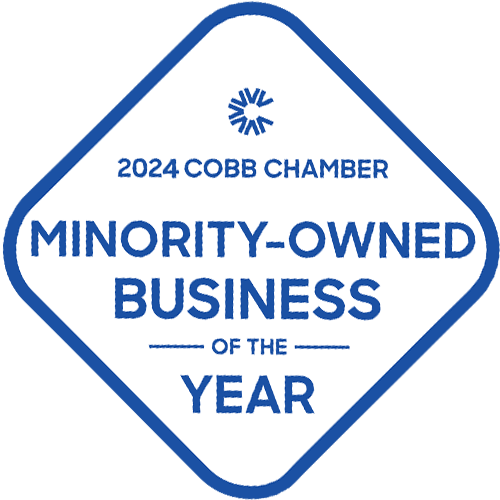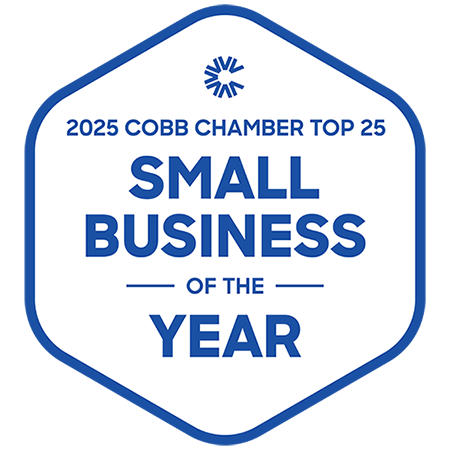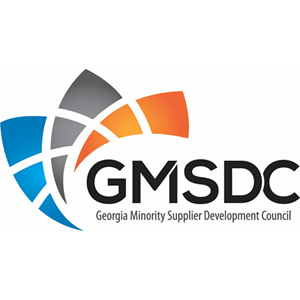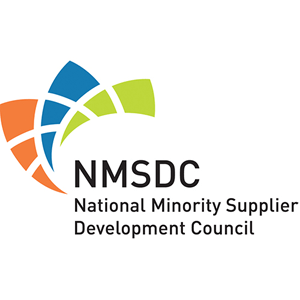Articles
To Enrich, Educate and Entertain
How to Attract and Retain Top Nonprofit and Fundraising Talent
Nonprofits and educational institutions rely on fundraising to sustain and grow. Neither have been immune to The Great Resignation or talent turnover in general, and the impact of these trends is acute and disruptive to operations and outcomes because of factors that are unique to job roles within these sectors. Topping the list is that reliable and deeply experienced employees are pivotal to these organizations' staying power. Fundraising is the most specialized form of sales and marketing - the art and science of marrying relationships with a mission - and everyone in the organization is involved in it. Keeping employees on board is mission critical.
During our years of service to nonprofits and schools across the state of Georgia and the Southeast, Perfect Image has been fortunate to build relationships with a wealth of subject matter experts. Today, I'd like to share insights on talent acquisition and retention in these segments from one of the most knowledgeable consultants and educators in the field. He recently shed light on how the nonprofit and fundraising world can power through these difficult times in his article entitled, "Why Can't I Retain Good Fundraisers?"
 About the expert: David M. Paule is an experienced chief executive officer, fundraiser, marketer, writer and educator. He has run five organizations, including three nonprofits and two for-profit organizations. Currently, he is a senior consultant at Our Fundraising Search, the Atlanta-based consulting and talent recruitment firm that helps nonprofits and other fundraising organizations evolve and build high-performing teams by sourcing talent for critical executive and development roles. Paule has also served for the past 18 years as an adjunct professor and instructor of Management at Georgia State University.
About the expert: David M. Paule is an experienced chief executive officer, fundraiser, marketer, writer and educator. He has run five organizations, including three nonprofits and two for-profit organizations. Currently, he is a senior consultant at Our Fundraising Search, the Atlanta-based consulting and talent recruitment firm that helps nonprofits and other fundraising organizations evolve and build high-performing teams by sourcing talent for critical executive and development roles. Paule has also served for the past 18 years as an adjunct professor and instructor of Management at Georgia State University.
Full disclosure: Many of the insights and recommendations Paule shares here will not be easy for some nonprofit and fundraising leaders or their board of directors to hear.
First, I'd like to share some data points that may be helpful to today's fundraising executives, CEOs and boards, as well as leaders in marketing, advancement, development and communications.
What is the employee attrition rate and who is impacted?
 The rate of attrition in nonprofit is very high, with 45% of employees planning to seek new jobs by 2025. Of particular concern is that turnover among fundraising professionals, as well as nonprofit CEOs and executives, exceeds that of any other staffing area within nonprofit and fundraising organizations.
The rate of attrition in nonprofit is very high, with 45% of employees planning to seek new jobs by 2025. Of particular concern is that turnover among fundraising professionals, as well as nonprofit CEOs and executives, exceeds that of any other staffing area within nonprofit and fundraising organizations.
"The turnover rate among fundraising professionals is generally held to be in the 18-to-24-month range, with some studies showing them as low as 14 months," says Paule. "This is extremely disruptive, given that it takes many years of experience before a professional becomes a truly effective fundraiser or nonprofit executive."
Here are the most common sectors that employ professional fundraisers, by number of employees:
- Civic, social and advocacy organizations
- Grantmaking and giving services
- Colleges, universities, junior colleges and professional schools
- Elementary and secondary schools
- General medical and surgical hospitals and specialty hospitals
- Individual and family services
- Business support services
- Museums, art galleries, historical sites and similar institutions
- Religious organizations
- Community food, housing and emergency services
- Business, professional, political and similar organizations
- Performing arts companies
Nonprofits are big business in the state of Georgia
- There are 57,692 nonprofit organizations in Georgia (one for every 170 Georgians).
- They employ more than 480,000 Georgians, nearly 5% of the state's population.
- They earn more than $77 billion in annual revenue and control assets of $181 billion.
A lot is at stake for these organizations and society, and the right talent is key to all of it.
What is the biggest talent issue facing nonprofits and schools?
"There is a sustained belief within the nonprofit and fundraising sector that technical proficiency is a top priority for leadership roles. More specifically, they place inordinate emphasis on mission-driven experience as opposed to leadership experience," Paule says. "For example, just as pilots don't run airlines, people in certain nonprofit functionalities, such as fundraising or program management, are not equipped to run an organization - at least not yet, as these leaders are years in the making. The result is that a lot of executive directors (ED) and CEOs have excellent programmatic or other experience but little financial, operational and strategic planning acumen. There is a set of knowledge skills and abilities that are essential to leadership - and these include the ability to attract and retain talent!"
Whose role is it, anyway? - or how boards can make or break an organization
 "Before talking about the professionalization of leaders, let's start with the board of directors, as everything evolves from here," says Paule. "Boards often don't understand their roles, responsibilities and liabilities - in essence, the differences between governance and management. They must understand that CEOs and EDs are self-managed, and that board directors are accountable for upholding the organization's legal and fiduciary duties. It is critical that boards stay in the governance lane! They have one employee - the CEO or ED - and they pay that person to run the organization. Full stop. On this note, hiring standards are lacking. Boards typically don't apply the same discipline to nonprofits as they do at for-profits. As a result, it's not uncommon for nonprofit CEOs and EDs to get jobs because they're likable or already in the organization and understand what it does - and not because of their leadership capabilities. It's a fatal flaw."
"Before talking about the professionalization of leaders, let's start with the board of directors, as everything evolves from here," says Paule. "Boards often don't understand their roles, responsibilities and liabilities - in essence, the differences between governance and management. They must understand that CEOs and EDs are self-managed, and that board directors are accountable for upholding the organization's legal and fiduciary duties. It is critical that boards stay in the governance lane! They have one employee - the CEO or ED - and they pay that person to run the organization. Full stop. On this note, hiring standards are lacking. Boards typically don't apply the same discipline to nonprofits as they do at for-profits. As a result, it's not uncommon for nonprofit CEOs and EDs to get jobs because they're likable or already in the organization and understand what it does - and not because of their leadership capabilities. It's a fatal flaw."
Paule says the best thing boards can do is get training in nonprofit leadership for themselves and key people within the organization. "The board is not going to get good CEOs and leaders unless they themselves are good leaders. There are a lot of great nonprofit leadership training opportunities out there. Also, to attract and retain top talent, organizations must have for-profit-level leadership practices in place (more on this later)."
Why do key professionals leave?
"Talent retention is not the responsibility of the employee. It's the responsibility of management," Paule says. In his article about retaining fundraising professionals, he shares five key drivers of turnover, noted below, that were uncovered in his research and discussions with candidates. I highly recommend exploring the article to fully understand the dynamics behind each one.
"When it comes to retaining talent, it's not about money," Paule says. "The reality is that fundraisers, executives and CEOs don't leave jobs chasing paychecks. Rather, they leave because of impossible goals, inflexible work environments, toxic cultures, and boards that are too involved in daily decisions and operations. A lot of nonprofit leaders, including board directors, either haven't been exposed to or are resistant to adopting an approach that embraces effective leadership, but this must happen to keep people on board."
 Fundraising goals that are impossible to attain: Bad budgeting practices run rampant in nonprofits, and fundraising is frequently the victim as a result. Regardless of what causes unrealistic goals, research conducted by E.A.Locke and G.P. Latham into employee motivation demonstrated that, while employees are motivated by difficult-but-achievable goals, impossible goals completely demotivate them. If the employee does not believe they can succeed, especially if the goal was set without their input, they will lose all motivation to achieve it and most likely devote their energies to finding better opportunities (and management) elsewhere.
Fundraising goals that are impossible to attain: Bad budgeting practices run rampant in nonprofits, and fundraising is frequently the victim as a result. Regardless of what causes unrealistic goals, research conducted by E.A.Locke and G.P. Latham into employee motivation demonstrated that, while employees are motivated by difficult-but-achievable goals, impossible goals completely demotivate them. If the employee does not believe they can succeed, especially if the goal was set without their input, they will lose all motivation to achieve it and most likely devote their energies to finding better opportunities (and management) elsewhere. - Lack of support from leaders who don't understand or care about fundraising: In 2007, Patrick Lencioni published his book, "Three Signs of a Miserable Job: A Fable for Managers (and Their Employees)" - in which Lencioni argues that the three signs of a miserable job are: a) Anonymity: People cannot be fulfilled in their work if they are not known - at least by their own managers; b) Irrelevance: Everyone needs to know their job matters to someone. Without seeing a connection between work and the satisfaction of another person or group, people will not find lasting fulfillment; and c) Immeasurement: Employees need to be able to gauge their progress and level of contribution for themselves, not simply based on the whims and opinions of their manager or other influential people. Many candidates I have spoken with told me that they work for nonprofit leaders who have little interest in fundraising or revenue production, and even less desire to participate in it. An air of indifference toward an employee, especially a talented one, is going to give them little reason to remain in a job, even if they are personally connected to the mission.
 Toxic leaders, boards, cultures and/or donors: Toxic environments are far more common in nonprofits than they should be. I have worked with more than a couple of organizations where the CEO turned over the entire C-suite of the nonprofit every two years, and the board remained indifferent to it. Even worse, I've seen boards and donors treat staff, fundraisers in particular, like hired help. I'll never forget an organization I worked with as second in command, with tens of millions of dollars in revenue under my responsibility. At an event, a member of the board, who wanted to leave as soon it was over, flipped his keys to me and told me, not asked, to have the valet bring his car around. He didn't even give me money to tip the valet. The experience was indicative of that board's underlying culture. Every officer reported similar experiences with board members. Some were worse, involving unwelcome touching, irrational expectations for donations, and racist or misogynistic comments.
Toxic leaders, boards, cultures and/or donors: Toxic environments are far more common in nonprofits than they should be. I have worked with more than a couple of organizations where the CEO turned over the entire C-suite of the nonprofit every two years, and the board remained indifferent to it. Even worse, I've seen boards and donors treat staff, fundraisers in particular, like hired help. I'll never forget an organization I worked with as second in command, with tens of millions of dollars in revenue under my responsibility. At an event, a member of the board, who wanted to leave as soon it was over, flipped his keys to me and told me, not asked, to have the valet bring his car around. He didn't even give me money to tip the valet. The experience was indicative of that board's underlying culture. Every officer reported similar experiences with board members. Some were worse, involving unwelcome touching, irrational expectations for donations, and racist or misogynistic comments.- Unworkable work-life conflicts: Fundraising is often not a nine-to-five job. Events, donor schedules and grant deadlines require fundraisers to have schedule flexibility. However, flexibility has limits. People get into fundraising because they care about the mission and stay in fundraising because they are good at it. It does not (hopefully) become the most important thing in their lives. If an organization does not respect work-life balance for their most critical employees, there is no reason for those employees to remain. There are too many opportunities to earn the same or more money elsewhere.
 Lack of opportunities for growth and advancement: Like compensation, lack of promotional opportunities is not as highly correlated to nonprofit job satisfaction as other factors, but there is still a correlation. A friend at a large nonprofit was passed over for promotion. Despite that this organization does not have a great human resources reputation, he says he is fairly compensated, has a decent work-life balance and gets along with the fundraising leader who is notoriously an HR nightmare. When he asked why he was passed over for promotion, he was told, "You're too good and too valuable in your present role for us to promote you." My friend, being at the age where he should be rising in his career, has children's college educations to plan for and a desire to continue to challenge himself. He sought me out to ask if there was something wrong that he wasn't satisfied with being pigeon-holed. There is nothing wrong with him. There is nothing wrong with any fundraiser seeking growth.
Lack of opportunities for growth and advancement: Like compensation, lack of promotional opportunities is not as highly correlated to nonprofit job satisfaction as other factors, but there is still a correlation. A friend at a large nonprofit was passed over for promotion. Despite that this organization does not have a great human resources reputation, he says he is fairly compensated, has a decent work-life balance and gets along with the fundraising leader who is notoriously an HR nightmare. When he asked why he was passed over for promotion, he was told, "You're too good and too valuable in your present role for us to promote you." My friend, being at the age where he should be rising in his career, has children's college educations to plan for and a desire to continue to challenge himself. He sought me out to ask if there was something wrong that he wasn't satisfied with being pigeon-holed. There is nothing wrong with him. There is nothing wrong with any fundraiser seeking growth.
Strong financial management is key to talent retention
 Dramatic changes are taking place due to the emergence of new technologies, digital communications, electronic transactions, regulatory changes, changes in giving habits, challenges in donor retention, ever-increasing societal needs, and demand for transparency. There is also growing pressure on boards in exercising their fiduciary duties to ensure assets are used according to donor intent and in support of the mission.
Dramatic changes are taking place due to the emergence of new technologies, digital communications, electronic transactions, regulatory changes, changes in giving habits, challenges in donor retention, ever-increasing societal needs, and demand for transparency. There is also growing pressure on boards in exercising their fiduciary duties to ensure assets are used according to donor intent and in support of the mission.
"These factors are driving an evolution in financial management, forcing organizations to improve fiscal and operational accountability and transparency," says Paule. "My mission is to help organizations navigate a new economic environment by sharing the knowledge I have gained from both the for-profit and nonprofit sectors. Simply said, sustainability requires operating internally as diligently as a for-profit entity. Just like in the for-profit world, the future demands adoption of best practices and financial and operational controls, such as internal auditing, risk assessment, business process evaluation, and strategic analysis of risks, compliance and controls. These are all building blocks to support the entire operation. Strong fundraising policies and procedures are just as key to a well-run organization and should be fully integrated with overall financial management, from programs to grants compliance, HR, procurement, and decentralized locations or teams."
 One of the many reasons this is important: "Too many nonprofits do not invest in financial management and controllership practices, and as a result, almost every nonprofit I've worked with, and many I have not, have had to deal with fraud," says Paule. "Nonprofit is a tax status, not a license to lose money. Nonprofits are critical to our society and thieves just don't care. There are challenges and risks surrounding compliance, inefficient processing, reconciliation and cybersecurity, and some organizations are not aware issues exist or that employees don't know how to communicate or solve problems. Internal controls and business process evaluation are vital solutions to assess internal practices, ensure compliance and take corrective and protective actions when necessary. You must run it like a business, and the goal should be to become a very successful and thriving business!"
One of the many reasons this is important: "Too many nonprofits do not invest in financial management and controllership practices, and as a result, almost every nonprofit I've worked with, and many I have not, have had to deal with fraud," says Paule. "Nonprofit is a tax status, not a license to lose money. Nonprofits are critical to our society and thieves just don't care. There are challenges and risks surrounding compliance, inefficient processing, reconciliation and cybersecurity, and some organizations are not aware issues exist or that employees don't know how to communicate or solve problems. Internal controls and business process evaluation are vital solutions to assess internal practices, ensure compliance and take corrective and protective actions when necessary. You must run it like a business, and the goal should be to become a very successful and thriving business!"
Creating a sound internal culture that supports strategic planning and stability, and this absolutely includes fundraising best practices and a sound donor management system, is what makes development succeed, Paule says. "Development is a shared, organization-wide responsibility, from the development officer or director to the executive director, the development staff, volunteers and the board. People stay when goals are attainable and there are systems in place to help everyone contribute and protect the organization."
Diversity is essential to culture, recruitment and retention
 "Thirty years ago, the fundraising profession was overwhelmingly male," Paule says. "When our founder and principal consultant Linda McNay first got into fundraising, the question was, "Can women even fundraise?' Historically, the profession had more than a gender problem, which swung in the opposite direction over time (71.1% of today's U.S. fundraisers are female), but the profession also had and still has a race and ethnicity problem. Fortunately, action is being taken."
"Thirty years ago, the fundraising profession was overwhelmingly male," Paule says. "When our founder and principal consultant Linda McNay first got into fundraising, the question was, "Can women even fundraise?' Historically, the profession had more than a gender problem, which swung in the opposite direction over time (71.1% of today's U.S. fundraisers are female), but the profession also had and still has a race and ethnicity problem. Fortunately, action is being taken."
Last year, nine organizations led by the Association of Fundraising Professionals (AFP) released a study on the issues of inclusion, diversity, equity and access (IDEA) in the fundraising profession, based on a survey of more than 2,000 fundraising professionals. Findings showed the fundraising profession is suffering significant instances of bias and discrimination that drive people away from their jobs, and that nonprofits will benefit from stronger leadership, more intentional support of staff and attention to creating policies and practices related to IDEA.
"Many leaders believe they are making progress, but staff members do not agree on the same level of progress and view this as mainly a leadership challenge," said Birgit Smith Burton, founder of The African American Development Officers (AADO) Network. "These disparities in perception can hinder efforts to make real change, so it's incumbent on leaders to be intentional in their work, create an environment that supports staff and develop clear and written policies and procedures that demonstrate the organization's commitment to employees."
Paule offers a case in point: "The next generation of Black fundraising professionals are now starting to reach the level of experience and knowledge required to be effective in senior-level and executive positions," he said. "We need to help them and professionals of other ethnicities grow into their professions." Today, approximately 82.9% of fundraisers are White (non-Hispanic), and Black (non-Hispanic) fundraisers represent 5.92% of fundraisers, the second most common race or ethnicity in this occupation.
Turn "The Great Resignation' into "The Great Attraction'
Millennials, the largest segment of today's workforce, are approximately 26 to 41 years old today, and they are leaving jobs that don't give them a sense of meaning or purpose. Meaning isn't everything to them, but it's a must-have. According to Paule, "Right now, overwhelmingly, the average fundraiser is a 43-year-old white female, on the upper cusp between millennials and Gen X. No one has cracked the recruitment and retention code yet with millennials and Gen Z workers because baby boomers did not retire on schedule and there is still a boomer mindset within nonprofits (i.e., "I don't want to work for my grandparents."). But the demographic shift is fast and fascinating, and positive change is eminent."
Emily Eakin, vice president of client engagement at Traction on Demand, echoes that sentiment with words of wisdom for today's organizations, "Nonprofits are well positioned to attract, develop and retain talent if they can rethink the traditional workplace," she says. "For the nonprofit sector to seize this opportunity and shift the tide from the "Great Resignation' to the "Great Attraction,' it must amplify the focus on our mission to make an impact every day."
Eakin acknowledges that millennials, more than any other generation, want to change the world, and that both millennials and Gen Z want to do meaningful work tied to specific outcomes and impact. "To leverage this moment, nonprofits need to invest in the tools, resources and technology to best attract these workers and keep in mind the significant return on investment they will bring."
Prepare for a bright future
 Projections on job growth for fundraisers from the Bureau of Labor Statistics show the 10-year national workforce is expected to grow 3.71%, and fundraisers are expected to see a growth of 14.3% over the same period. This is great news for the profession!
Projections on job growth for fundraisers from the Bureau of Labor Statistics show the 10-year national workforce is expected to grow 3.71%, and fundraisers are expected to see a growth of 14.3% over the same period. This is great news for the profession!
"Working in nonprofit is hard and challenging, but to me, it's much more uplifting than for-profit work," Paule says. "When I was executive director and CEO for the Georgia Lions Lighthouse Foundation, we were providing glasses and hearing aids to people who couldn't afford them. Having a positive, meaningful impact is so much more motivating than "oh hey look, we met the sales quota,' or "oh look, we have a new app.'"
It's not for everybody and the pay scale is not typically as high as in the for-profit sector, he says, but it pays very well and it's for people who want to have an impact in life.
"And the field is getting smarter!" Paule adds. "There's a lot of ground to make up after many years of lack of investment in leadership and good business practices, but I"m excited about the new generation coming into the field. I will continue to take everything I've learned about running a business into a sector where I can help others make a difference while doing so myself."
A transformative guide to fundraising for organization management
Paule is coauthor of the book "Fundraising for All: What Every Nonprofit Leader Should Know," along with Linda Wise McNay, Ph.D., and Ailena Parramore.
 McNay is founder, owner and principal consultant with Our Fundraising Search. She has completed more than 15 years of consulting and served more than 200 clients, including work with higher and secondary education, the arts, human services and faith-based organizations. She has deep experience in capital campaigns, annual funds, planned giving, membership, development and executive search.
McNay is founder, owner and principal consultant with Our Fundraising Search. She has completed more than 15 years of consulting and served more than 200 clients, including work with higher and secondary education, the arts, human services and faith-based organizations. She has deep experience in capital campaigns, annual funds, planned giving, membership, development and executive search.
Parramore has raised millions of dollars for organizations in many arenas since starting her nonprofit journey in 2005. Her background includes work in secondary education, health and human services, city government, departmental planning and structure, annual and capital campaign development, donor identification, cultivation and stewardship, volunteerism, events and corporate engagement and sponsorships.
I was honored to be among the first recipients of this book when it was released last year. As a veteran business owner and board director at multiple nonprofit organizations, where I have served as development chair, I'm compelled to say the title says it all. Whether you are new to fundraising or a seasoned veteran, make "Fundraising for All" an immediate go-to guide for creating and refining your advancement and development efforts.
Expert resources to help you build a stronger foundation
In addition to key nonprofit talent recruitment, Our Fundraising Search helps organizations confidently move away from legacy internal operations to the benefits of mainstream financial and operational management. Comprehensive services include Annual Fund Counsel, Board Recruitment and Training, Capital Campaign Counsel, Development Assessment, Development Search, Endowment Counsel, Feasibility Studies, Fundraising Coaching, Fundraising Counsel, Interim Staffing, Planned Giving Basics, Pre-Campaign Counsel, and Strategic Planning. Contact the firm for additional information, resources and support.

Perfect Image Insider
Sign up for valuable insights into print and marketing!
Get a Quote
Let us show you that we are your solution!

